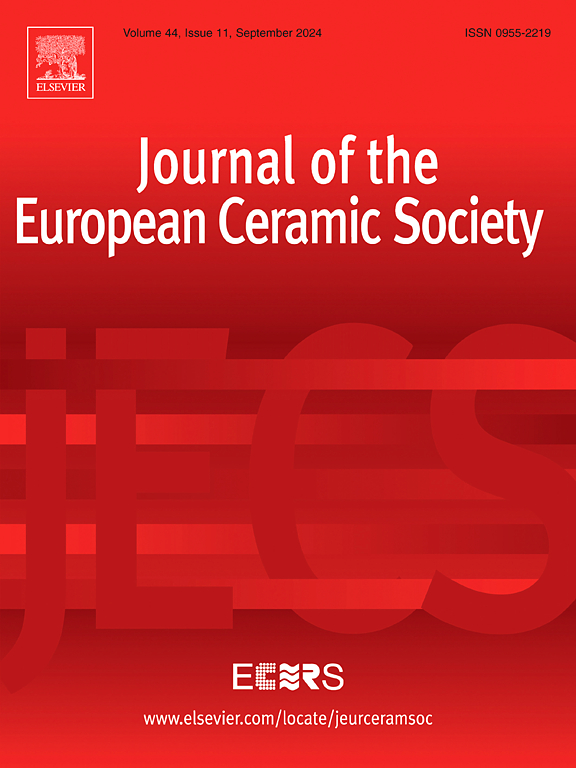All-ceramic solid oxide fuel cells utilizing phase-inversion derived scaffolds and impregnated nanoparticles as cathodes
IF 5.8
2区 材料科学
Q1 MATERIALS SCIENCE, CERAMICS
Journal of The European Ceramic Society
Pub Date : 2025-03-25
DOI:10.1016/j.jeurceramsoc.2025.117399
引用次数: 0
Abstract
Solid oxide fuel cells (SOFCs) supported on ceramic cathodes exhibit better redox stability and allow for a broader selection of anode materials compared to those supported on Ni-yttria stabilized zirconia (YSZ) cermet anodes. In the present study, a cathode-supported all-ceramic SOFC was investigated. The cathode consisted of a phase-inversion derived porous YSZ scaffold impregnated with LaCoO3 (LCO) nanoparticles of optimal loading 15 wt%. The anode was composed of a thin porous YSZ scaffold impregnated with Sr1.9Fe1.4Ni0.1Mo0.5O6-δ (SFNM) nanoparticles of optimal loading 40 wt%. An SOFC featuring a 400 μm thick LCO@YSZ cathode, a 10 μm thick YSZ electrolyte, and a 30 μm thick SFNM@YSZ anode, achieved a maximum power density of 1084 mW•cm−2 at 800 °C and 350 mW•cm−2 at 650 °C. The cell with an LCO-Gd0.1Ce0.9O2-δ composite cathode exhibited improved stability compared to that with the LCO single-phase cathode when operated in potentiostatic mode at 650 °C.
求助全文
约1分钟内获得全文
求助全文
来源期刊

Journal of The European Ceramic Society
工程技术-材料科学:硅酸盐
CiteScore
10.70
自引率
12.30%
发文量
863
审稿时长
35 days
期刊介绍:
The Journal of the European Ceramic Society publishes the results of original research and reviews relating to ceramic materials. Papers of either an experimental or theoretical character will be welcomed on a fully international basis. The emphasis is on novel generic science concerning the relationships between processing, microstructure and properties of polycrystalline ceramics consolidated at high temperature. Papers may relate to any of the conventional categories of ceramic: structural, functional, traditional or composite. The central objective is to sustain a high standard of research quality by means of appropriate reviewing procedures.
 求助内容:
求助内容: 应助结果提醒方式:
应助结果提醒方式:


